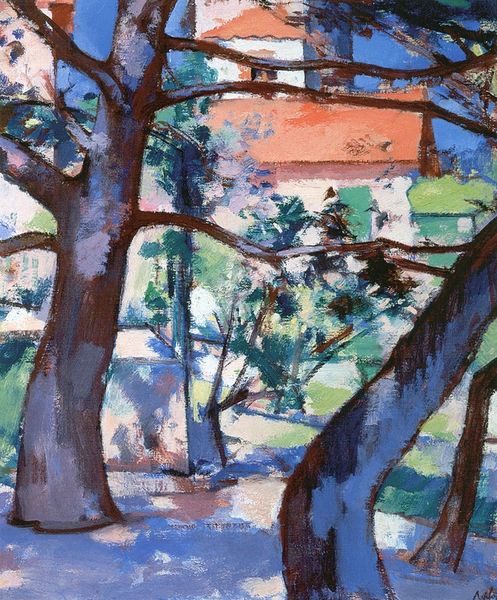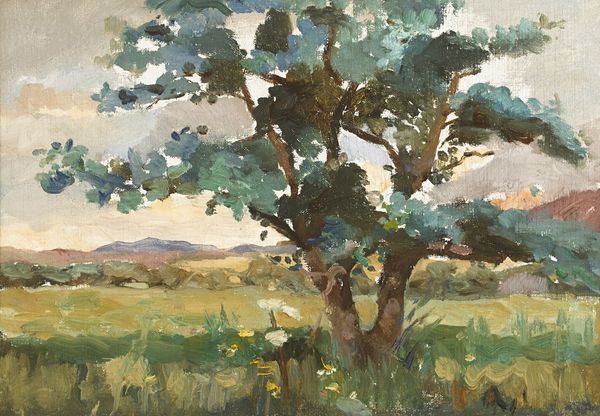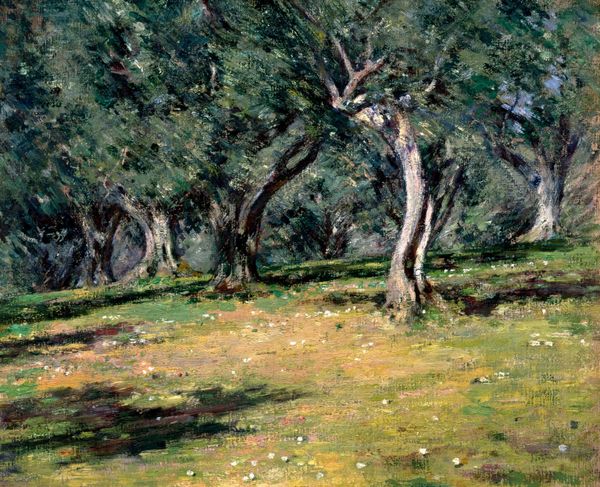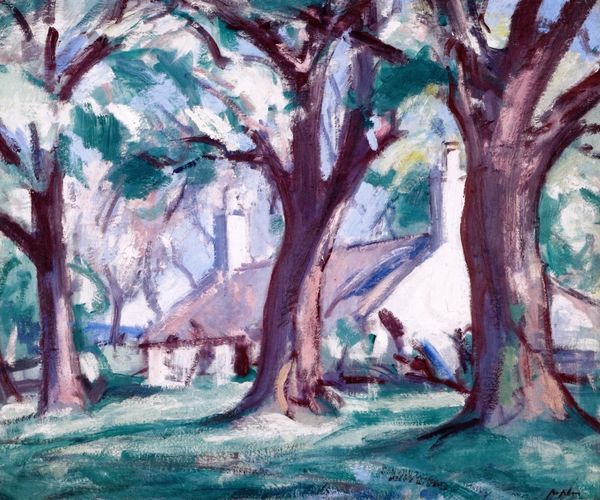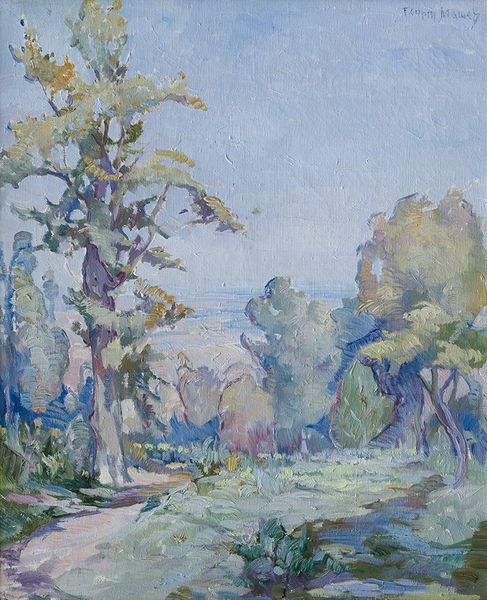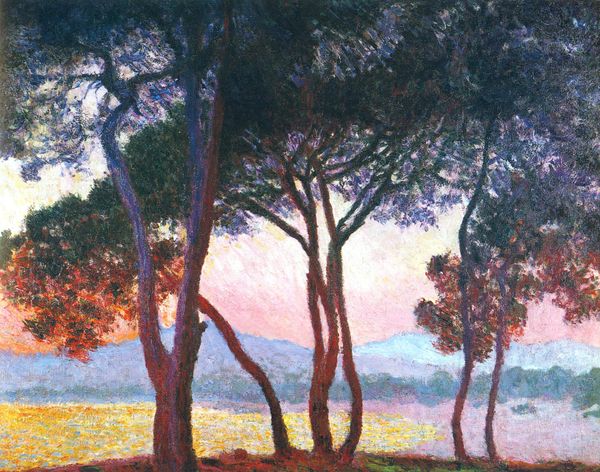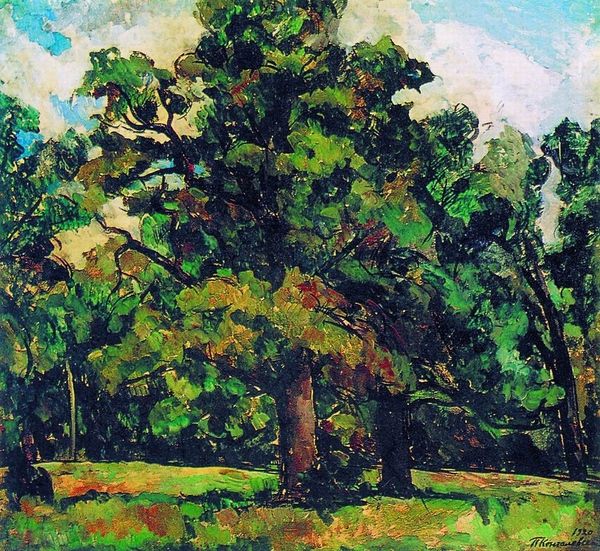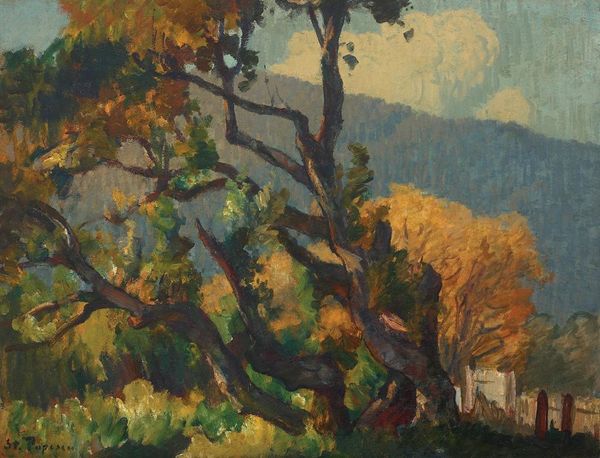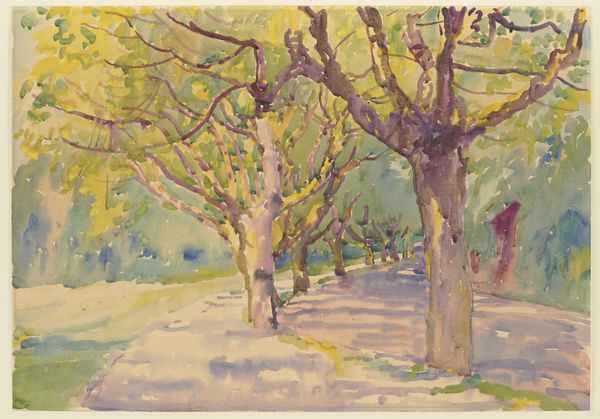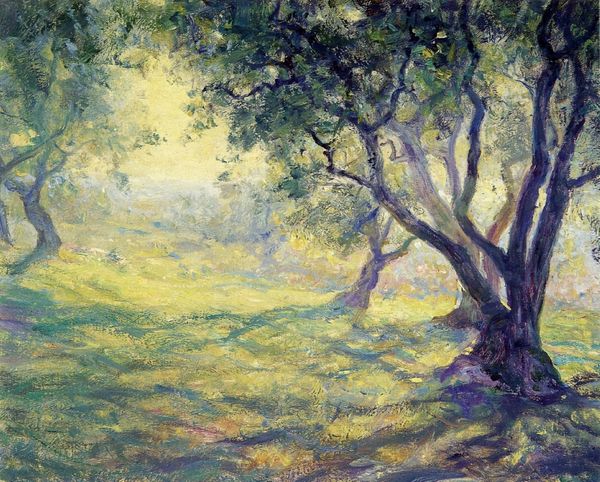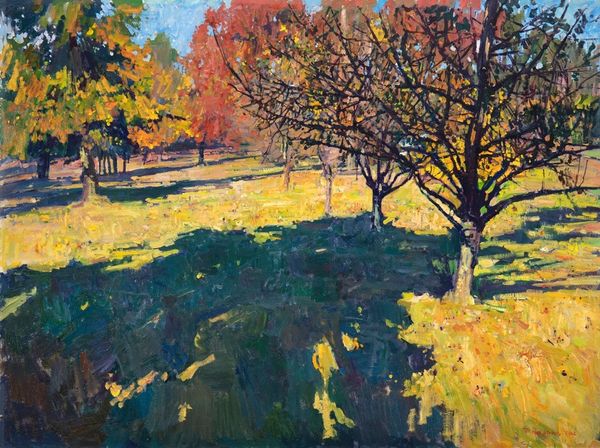
Copyright: Public domain
Editor: Samuel Peploe’s “Trees, Antibes,” created in 1928, is quite captivating. The oil paint, thickly applied, gives the landscape a tangible, almost sculpted quality. The scene feels both peaceful and slightly melancholy to me. What do you see when you look at this work? Curator: The overriding formal element is surely the light. Notice how Peploe isn't merely representing trees but investigating the very nature of light as it filters through their branches. The color palette, restricted mainly to blues, greens, and browns, creates a unified and harmonious visual field. Editor: It’s interesting that you mention the light because I thought the colors made it quite dark overall. Can you elaborate? Curator: Consider the way Peploe uses impasto – those thick dabs of paint – to capture the shimmer on the leaves and the ground. It’s not so much a depiction of darkness, but a rendering of the complexities of light interacting with form. It evokes, rather than illustrates, light. How does the arrangement of the trees contribute to your reading of the painting? Editor: The trees do frame the landscape behind them, adding depth, so it’s not completely closed off, even if there’s very little color variation. Curator: Precisely! The repetition of the trees, their verticality countered by the horizontal thrust of the land and sea, provides a structural framework. It allows the eye to move rhythmically across the canvas, engaging in a dialogue between form and space. A successful manipulation of perspective, color and, of course, light, for a very interesting effect. Editor: I hadn't really thought about how the trees structure the space like that. Thanks, that gives me a lot to consider! Curator: It’s been a pleasure examining these structures with you.
Comments
No comments
Be the first to comment and join the conversation on the ultimate creative platform.
